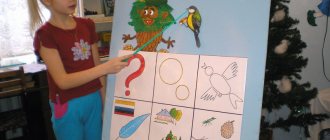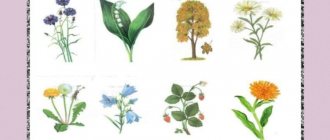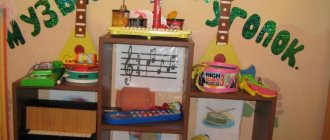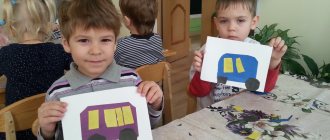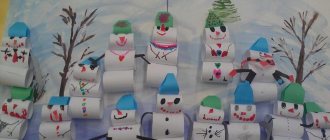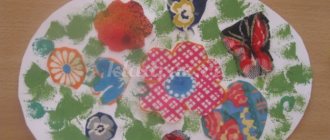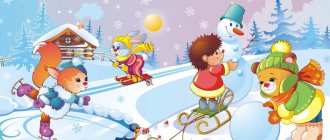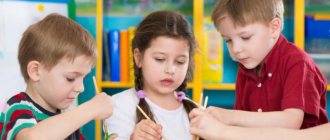The main purpose of a child spending time in kindergarten is to prepare for school and develop the necessary skills that will be useful to him in later life. At this stage, the type of learning in the form of play is used, which is the most practical and interesting for the child.
The toys that are used for this purpose change as the baby grows and should be appropriate for his age. It is desirable that kindergarten has a wide variety of complex and simple geometric shapes. There should also be figurine toys that allow you to get closer to the animal world and other components that can be observed in real life: models of home and streets, parking lots, airports, shops, etc. Toys for the middle group are more complex equipment with a deep study of the environment environment, its properties and characteristics.
The most practical are considered to be autodidactic elements of the game, which are able to independently teach a child without outside help. They can give the baby an idea of how to handle them. Such elements of the game include sorters that help develop logical thinking, puzzles of varying complexity and material, children's puzzles (tangram) and others.
General requirements for toys
Children in the younger group are very inquisitive and actively explore the world around them. They are interested in touching objects, examining them from all sides, breaking them and taking them apart. Many people do not miss the opportunity to taste the toy. Therefore, when arranging a garden, safety comes to the fore. Two- and three-year-olds do not always understand that something can harm them. Therefore, toys with small parts, sharp corners and loose elements are strictly prohibited. Make sure that the composition does not contain flammable or toxic materials. All parts should be easy to grip; there should be no splinters, burrs, or chips on the surface! “Talking” and musical games should not make too sharp or loud sounds. The maximum volume that is comfortable for a child’s ear is 70 dB.
What else you need to know about toys for younger preschoolers:
- They need to be selected taking into account the age characteristics of the children. If a child, due to his age, does not understand how to manipulate a complex toy (for example, a construction set with hundreds of parts or a controlled crane), then interest in it will quickly fade away.
- Toys should be multifunctional, broaden their horizons, and stimulate the child’s cognitive and research activity.
- They should evoke positive emotions, teach kindness and good deeds. No creepy monsters or characters with evil faces - this can provoke aggression, hysteria in children, and simply greatly frighten them.
Children spend most of the day in kindergarten. According to the Federal State Educational Standard, it is necessary to create for them a subject-spatial gaming environment that will not only be pure entertainment, but will also give an idea of the real world. Place your bets on popular self-learning toys. In the process of interaction, children intuitively understand how to handle them correctly. Such toys include aids based on the Montessori school method: sorters, lacing, busy boards, insert frames, wooden puzzles, boards, sensory bags, tactile books, etc. They help to learn about the main properties of surrounding objects (shape, size, color, texture), train logic, concentration and fine motor skills.
Provide easy access to toys in the playroom. They should be located in containers, boxes or on shelves at the height of children. For games with many small parts, consider packaging that closes tightly and securely.
Peacock made of plasticine and paper
If your child prefers to work with plasticine, invite him to sculpt a peacock:
- Make a circle and an oval from plasticine;
- Connect the round head and oval body;
- Fashion a triangular beak and attach to the head;
- Make a peacock crest from a cotton swab cut in half;
- Roll a piece of colored crepe paper into small balls;
- Cut out a semicircle from cardboard - the future tail of a peacock;
- Coat the semicircle with plasticine;
- Glue rows of paper balls in rows to form the peacock's tail.
What are the toys made of?
Let's look at the main materials from which children's toys are made for junior groups 1 and 2.
- Plastic. Typically this is polyvinyl chloride, polypropylene or polystyrene. A huge number of toys are made from plastic: cars, construction sets, cubes, sets of dishes, pyramids, sandbox accessories, vegetables and fruits, etc. Plastic has a rich color scheme, and the toys themselves are bright, often interactive and multifunctional. Plastic products are produced in Russia and in huge quantities in China. You need to be especially careful with Chinese-made toys, because plastic often contains components that are harmful to health: phthalates, phenols, heavy metals. When purchasing plastic toys for children in a kindergarten, be sure to check whether they comply with the requirements of GOST and SanPin. Such toys have a quality certificate and are marked “does not contain phenols or phthalates.” You can recognize a “harmful” toy by its pungent chemical smell, paint that stains your hands, or plastic burrs along the edges.
- Tree. For the production of games, species that can be easily processed are used: birch, beech, pine, etc. They are environmentally friendly and do not harm the child or the environment. Among the wooden toys there are many educational aids, puzzles, construction sets, puzzles - everything that develops motor skills and tactile sensations. Wood is heavier than plastic. By touching it, the child understands the real weight of the object: it takes some effort to lift and move the wooden figurine. Laconic toys that are not overloaded with details awaken the imagination and provide unlimited scope for imagination. If the toy is not painted, you can paint it together with the teacher or leave it in its natural form to see a cut of a real tree with growth rings and veins.
- Textile. Soft toys, puppet theater characters, cubes, and educational felt books are made from it. Fabric dolls must have a solid frame so that the body does not deform or bend during play. In a soft stuffed toy, the seams must be strong and neatly stitched so that the filler does not come out. Sharp objects, glass, cotton wool, and granules with a diameter of less than 3 mm are not allowed as filler.
Most toys combine different materials. For example, a bodyboard on a wooden base usually has metal locks and latches, plastic beads, fabric characters, laces, and zippers. Such a variety of textures, rough and smooth surfaces perfectly develop sensory experience, sharpen the accuracy and coordination of hands and fingers.
Firebird
You can make a paper craft for the older group in the form of a magic bird using colored paper.
On a sheet of paper that serves as a base you need to draw the head and body of the bird. If your child doesn't draw that well yet, help him. Invite your child to decorate the bird and glue its beak and eyes from colored paper.
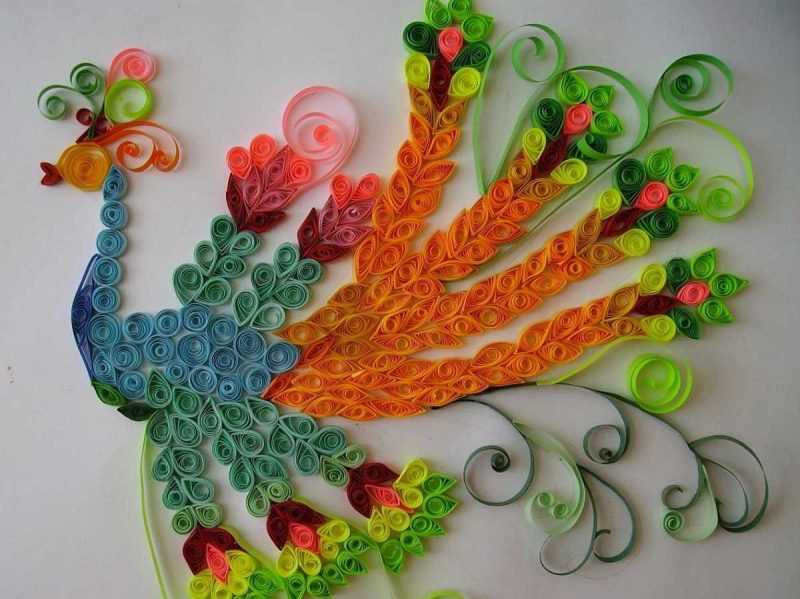
Next, the child can cut out several large ovals from office paper. These will be the tail feathers of the firebird. Each feather needs to be decorated. You need to draw different patterns on the feathers with pencils, felt-tip pens or paints. The finished feathers need to be glued to the back of the bird, forming a multi-colored tail.
Toys for speech development in the younger group
From the age of 2, the child begins to enrich his active vocabulary, construct phrases, and attempt meaningful dialogue. Therefore, you need to pay attention to games for fine motor skills and manipulation of objects. Speech and motor skills are inextricably linked: the brain centers responsible for speech are located near the motor area. The best stimulants for speech development will be:
- sorters, labyrinths, lacing beads - train the accuracy of actions;
- business boards based on cartoons or fairy tales - develop imagination, imagination, teach how to play out scenes and at the same time interact with elements (open and close windows, rearrange a character in a train, etc.);
- musical toys: metallophones, xylophones - develop coordination, teach you to distinguish sounds, feel the rhythm, encourage you to hum a melody;
- folk toy matryoshka - introduces children to Russian folklore, promotes speech development with the help of riddles, counting rhymes, and nursery rhymes;
- cards with images of animals, objects, phenomena - each card can be examined and discussed what is depicted.
During the game, the teacher needs to talk through all the actions with the children, imitate the sounds of animals, speak slowly and clearly, and pronounce each sound. Kids like to repeat everything after adults, so they will happily pick up phrases and become participants in the “dialogue.”
Butterfly in palms
By the age of five, children are good at cutting out, especially large parts. With older children you can make a three-dimensional paper craft:
- Fold the A4 sheet in half;
- Place your palm on the fold and trace it with a pencil;
- Cut out the shape, you should have two palms joined together;
- Paint your palms;
- Cut out two butterflies from thick colored paper or cardboard, one of them should be slightly larger;
- Glue a large butterfly in the center of the palms. Apply glue only in the center so that the wings can rise;
- Glue a smaller butterfly on top;
- Fold the wings up so they stick out.
List of toys for 1st junior group
Junior group 1 includes children from 2 to 3 years old. They are often restless and very active. Therefore, they need a constant change of activities so that active games alternate with “developmental games” that require concentration and perseverance. Wooden toys are a priority here: they are safe, understandable, and contribute to the development of imagination and creativity.
We have selected 10 toys that a group of little ones definitely cannot do without.
- Busy boards, especially thematic ones, based on fairy tales. Objects united by one theme are collected on one surface. This will allow children not only to develop tactile skills, but also to use their imagination, come up with scenes and stories with characters on the board.
- Wheelchairs - hone your sense of equilibrium and balance.
- Toys for stringing parts, tying or screwing: sorters with pins, pyramids, lacing.
- Large cubes with numbers and letters are the first steps to understanding mathematics and writing.
- Puzzles where you need to assemble a whole picture from 4-5 pieces.
- Insert frames with images of animals, transport, fruits, vegetables, etc.
- Simple wooden construction sets with 25-30 parts.
- Labyrinths with several challenging bead routes.
- Cut-out pictures and educational cards depicting letters, cars, fruits, vegetables, and various household items. In this case, the child compares the visual image in the picture with the spoken word. Having remembered, in the future he can easily say the name of this or that object.
- Balls, ring throws, sandbox sets, etc. everything for outdoor games.
During the lesson with toys, the first younger group only begins to engage in productive activities: drawing, design, attempts at story-based play. It is important for a kindergarten teacher to support these endeavors, take an active part in the game, and comment on the actions.
Where and how to post in a group?
Such items should be available in the garden. But this does not guarantee their proper use. They need to be marked correctly. We have several recommendations on this matter:
- The space needs to be divided into thematic zones. Most often there are 3 or 4 of them. The first zone is an imitation of a kitchen with the presence of toy dishes and household appliances. The second is an imitation of a bedroom where cribs with dolls are placed. The third zone is a screen in the form of a small house, where there are products in the shape of animals. The fourth is an imitation of the interior of a passenger bus.
- All objects that come into the toddler’s field of vision must be accessible. They can be placed on low racks, in mobile boxes, and plastic containers.
- Some entertainment attributes need to be made mobile. Their peculiarity will be that they can be used in different areas and can be easily transferred from one space to another.
Smart selection and practical placement of items will make the gameplay not only fun, but also useful. This approach will have a positive effect on the development of a 3-4 year old child. Toys will develop his fantasy, imagination, and orient him in space.
List of toys for 2nd younger group
The 2nd younger group includes children from 3 to 4 years old. Fine motor games are still important for them, but role play also appears in the activity. This is where toys come in handy, with the help of which kids come up with various scenarios and simulate real-life situations. Children learn to play together and show creativity. Therefore, to the previous list of materials for the first group we will add a few more:
- Calendar games on a wooden base. They are similar to busy boards, but their purpose is to teach the child to determine the time, day of the week, season. These manuals are bright and colorful, the numbers on the dial are clear, and the weather and season are indicated with a caption and pictures to make them easier to remember.
- Role-playing games on various topics: doctor’s and hairdresser’s kits, grocery baskets, household appliances, dishes. Girls like dolls and doll houses, boys like robots and fantastic animals.
- Lotto and dominoes. Promote the development of speech, memory and logical thinking. They are convenient to play with a whole group, but only under the supervision of a teacher.
- Various types of public transport and cars.
- Finger theater, hand puppets and folding theater screen.
Games that deepen knowledge about counting will be useful: business boards with numbers, abacus, counting sticks, fraction puzzles. Construction sets for the second junior group of kindergarten are much more complex; they contain more details and small elements.
Play equipment in the garden needs to be changed and updated regularly. Over time, any toys become outdated, worn out and simply boring. But competently equipping a kindergarten is only half of success and harmonious development. For young children, the most important thing is to introduce a new toy correctly. Try to clearly explain and clearly show how it should be handled. And most importantly, do not forget about safety rules and age-appropriate toys
Plasticine rose
- Roll long thin sausages from green plasticine, these will be the stems;
- Glue the stems to a piece of paper;
- Roll long, thin sausages from red, pink or yellow plasticine;
- Roll the sausage in a spiral to create a circle. These will be flowers;
- Attach flowers to stems;
- Make leaves from flat green ovals and add veins to them.
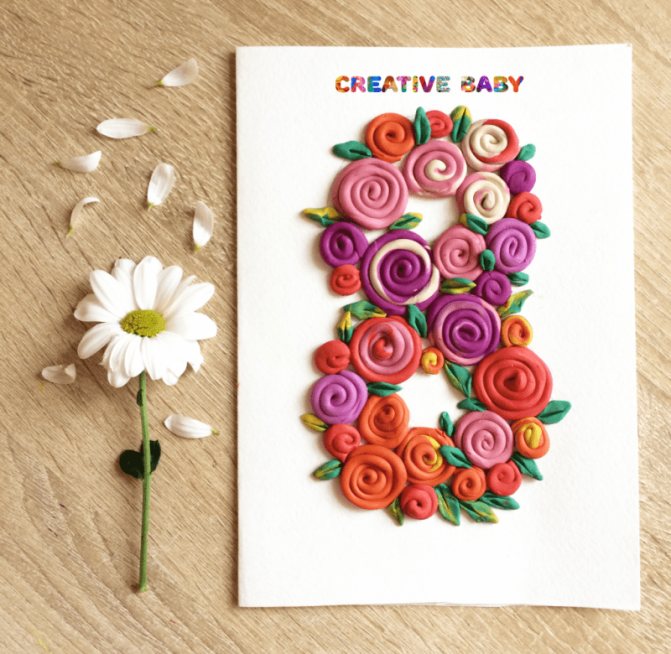
By the age of five, children have already mastered most of the techniques used in creating crafts, and the choice of product is limited only by the availability of the necessary materials at home.
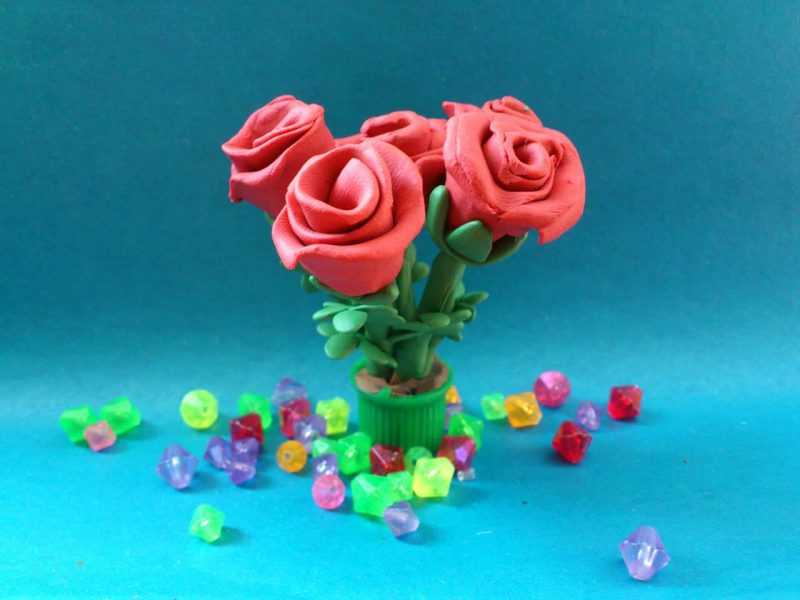
From 6 to 9 years
School-aged children love to play, which requires strategy and skill. Board games, outdoor sports, and classic toys like kites and trains are favorites. Children of this age also seek new information and experience through play, engage in creativity, and play with experiment and magic kits.
Bicycle and helmet Simple swimming equipment Skates, rollers, skateboard and safety equipment Construction sets Jump rope Figures Paper doll with outfits Sticker books Modeling kits Board sports Electronic games Dolls, clothes and accessories Dollhouses and furniture Board games Puzzles Experiment and trick kits

Interactive toys that talk to each other if you connect them with their tufts.
Manuals for kindergarten teachers

The adoption of the Federal State Educational Standard for preschool education puts forward new requirements for teachers of children's educational institutions. They have to find new effective methods of interaction with preschoolers and apply non-traditional approaches in the use of various visual aids, objects, toys, and modern educational technologies. For this purpose, there are a variety of manuals for educators , which simplify the work of the teacher and help children learn the material more easily and easily.
It is not enough to have a large number of high-quality aids; it is also important to be able to use them competently so that students are interested in receiving information and can successfully assimilate it.
Types of benefits in the work of a preschool institution
In order for educators to effectively carry out their mission of teaching and educating the younger generation, they need to receive a large amount of competent modern information in full accordance with the directions of pedagogical science. This means that in their activities preschool teachers use numerous manuals, which can be divided into the following conditional groups:
- Manuals for training teachers. This is mainly pedagogical literature, textbooks, scientific developments of specialists in the field of teaching and upbringing of preschool children. At them, teachers learn the basics of their profession, gain the most important theoretical knowledge, which in the future they will effectively implement in their practical activities in preschool educational institutions.
- Methodological manuals for educators. This is an official publication that fully complies with the educational program and provides brief, but succinct and important information on a specific topic. It discusses the methods of education and training, that is, this document helps teachers determine the necessary steps and their sequence in working with children to obtain an optimal result. The theoretical side of the issue is considered minimally in the teaching aids, only to the extent necessary for a full understanding and assimilation of the topic.
- A visual aid for educators. These are various images of objects, objects and phenomena (flat or three-dimensional), used for teaching in order to form in students the correct concepts and ideas about the world around them, and to develop specific skills. Visual aids must meet numerous requirements, including selection by age of students, compliance with programs and teaching methods. They must also comply with sanitary and hygienic standards, be safe, aesthetically pleasing and useful for the development of children and the formation of a creative personality in them. Visual aids are among the most diverse things used in the work of a children's educational institution. They are usually divided into the following groups:
- Natural – natural objects.
- Fine – objects of painting, sculpture, graphics.
- Technical - video, audio, filmoscopes, records, televisions, players, computers and so on.
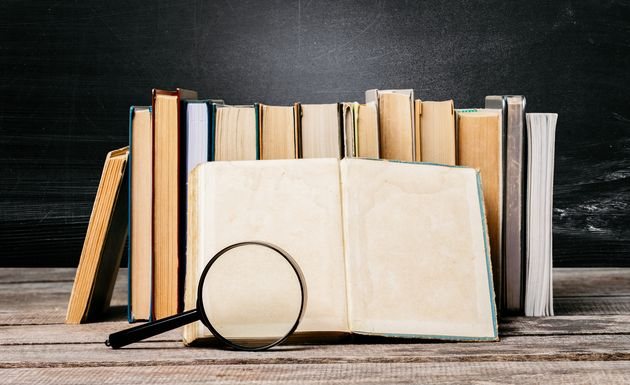
In the work of a teacher and educator, any benefit is of great importance. For one’s own development and self-education, which will later be reflected in practical work with children, textbooks and teaching aids are used. They form in the preschool educational institution specialist a correct understanding of the need to follow a certain methodology and training system, as well as the need to use innovative methods. All this is directly related to the modern attitude to the pedagogy of preschool education and the rejection of old forms, some of which have already lost their relevance, while others need to be revised and supplemented.
The importance of using benefits wisely
For the direct transfer of skills and abilities from teacher to student, the use of appropriate visual aids is of great importance. It is with their help that it will be easiest for a child to master complex concepts, since in this case various sensory groups are connected: vision, touch, hearing, and sometimes even smell. All this contributes to better assimilation, understanding and memorization of the material being studied.
An important role is also played by the fact that the use of such benefits takes place in an easy game form. Children do not feel pressure from an adult, easily absorb information, and have better contact with peers and with the teacher during play. These conditions are provided by a visual aid.

Sometimes teachers and educators have to make them themselves. At the same time, it is important that the finished product meets the specific goal of the preschool educational institution employee, is used taking into account the accepted methods of education and is suitable for children in the age group.
The success of using benefits during classes is ensured by compliance with the following conditions:
- High quality, allowing you to clearly see the object and eye-catching colors.
- Highlighting the main thing, which is especially important when demonstrating various illustrations, as well as competently thinking through and formulating age-appropriate explanations that should be understandable to students.
- Involving children in studying the manual and determining the information contained in it on their own.
At the same time, when doing this work, it is necessary to take into account the following facts:
- Too many benefits will only do harm, since children, due to their age, are not persevering and will not be able to assimilate excessive amounts of information.
- The manuals should be used in a specific order to avoid fragmentation of input and confusion that will not allow children to understand what is happening.
- Before starting classes, technical equipment, devices and aids must be checked and ensured that they are in working order.
- Individual benefits must correspond to the age of the pupils, because the benefits for the middle group will be incomprehensible to children, and the simplest “pictures” will not resonate with older children.
- The environment must be prepared for working with aids, providing sufficient space, good audibility and visibility, clarity of image and sound, and so on.
Taking into account all of the above, it becomes clear that any benefits play a huge role in the activities of the kindergarten teacher and in the work of the entire preschool educational institution as a whole. Educational and methodological aids are selected by the teacher taking into account his needs and the direction chosen for teaching students. Such benefits are also offered by the senior kindergarten teacher. They help make the learning and education process more harmonious and modern.
Visual aids were, are and remain one of the important tools for raising and teaching a child. With their help, you can develop various skills, form new skills and lay the foundations for deeper and more extensive knowledge. The goal of the teaching staff of the preschool educational institution is to select from the mass of proposed manuals exactly those that are best suited to a specific group of children and most accurately correspond to the chosen teaching and upbringing method in a preschool institution.
From 1 to 2 years
Kids at this age are already full-fledged researchers. They want toys that encourage physical play—walking, climbing, pushing, and riding—and toys that encourage experimentation and manipulation. At this age, children love props and role-play that allow them to imitate adults, as well as toys that allow them to play alone.
The list of recommended toys for this age is completely similar to the previous one. Expand your stock of books and construction kits.
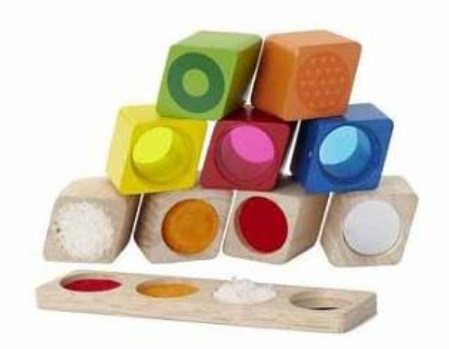
Wooden rainbow blocks will help develop the three senses: sight, touch and hearing. Set from Wonderworld.

